Blackburn Central Seatpost Rear Rack Review - a sturdy solution for frames without mounts
A versatile and well-made rack that will fit most bikes, but is particularly useful for frames that lack rack mounts.
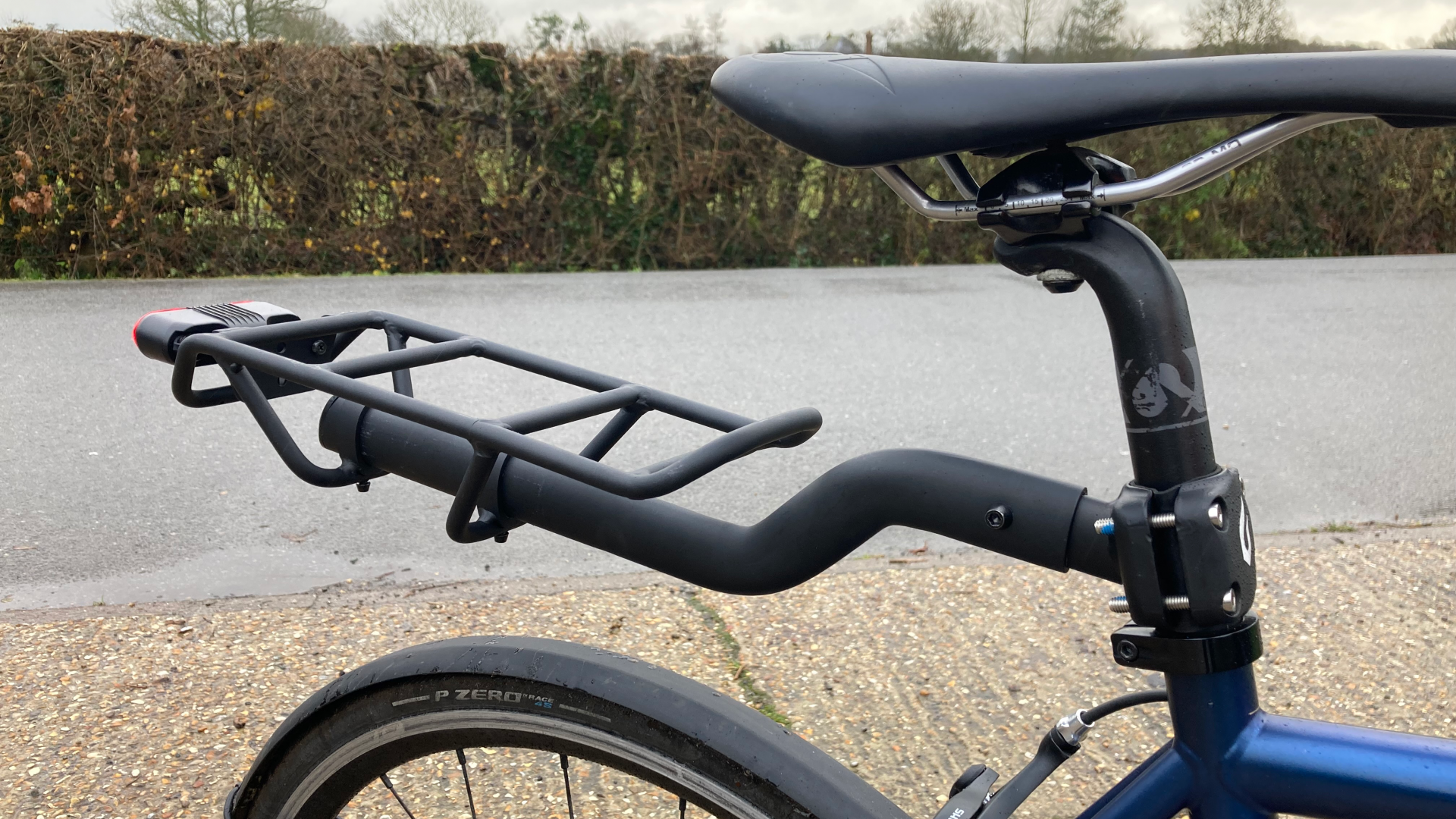
A well-made product from Blackburn that can turn most bikes into a load carrier, even those that can't accommodate a conventional rack. It can be used with a rack bag or a drybag/bungee combination. Height can be adjusted by setting the central beam into an upward or downward position, on which the rack body is then secured, enabling a good amount of fine tuning. Overall a good product for those wanting a versatile rear rack.
-
+
Well made
-
+
Sturdy
-
+
Useful for frames without rack eyelets
-
+
Will fit a wide range of frames/bikes
-
+
Lifetime warranty
-
-
A little fiddly to fit, but it's ok
You can trust Cycling Weekly.
The Blackburn Central Seatpost Rear Rack enables just about any bike, regardless of size or type, to carry a load, provided there's enough seat post showing. Its flexible design boasts two different height settings plus fore and aft adjustment, so your load shouldn't interfere with your riding position or other kit. The ability to alter the height also means it can fit a wide selection of bikes.
It weighs in at 763g and has a 10kg/22lb carrying capacity, which should be plenty for most people.
It costs $65.00, £59.99 or €69.99, and is available in one size and one colour (black).
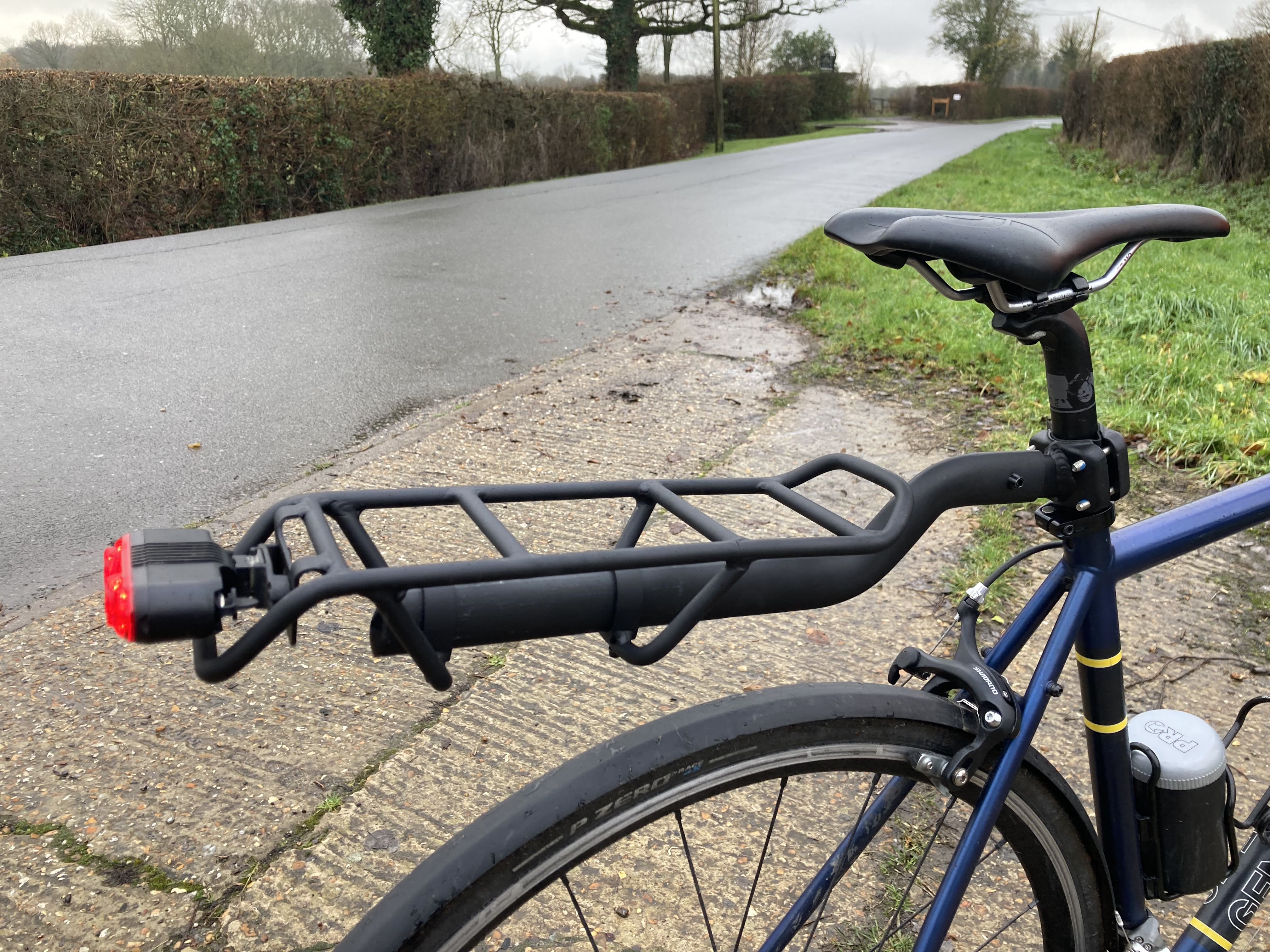
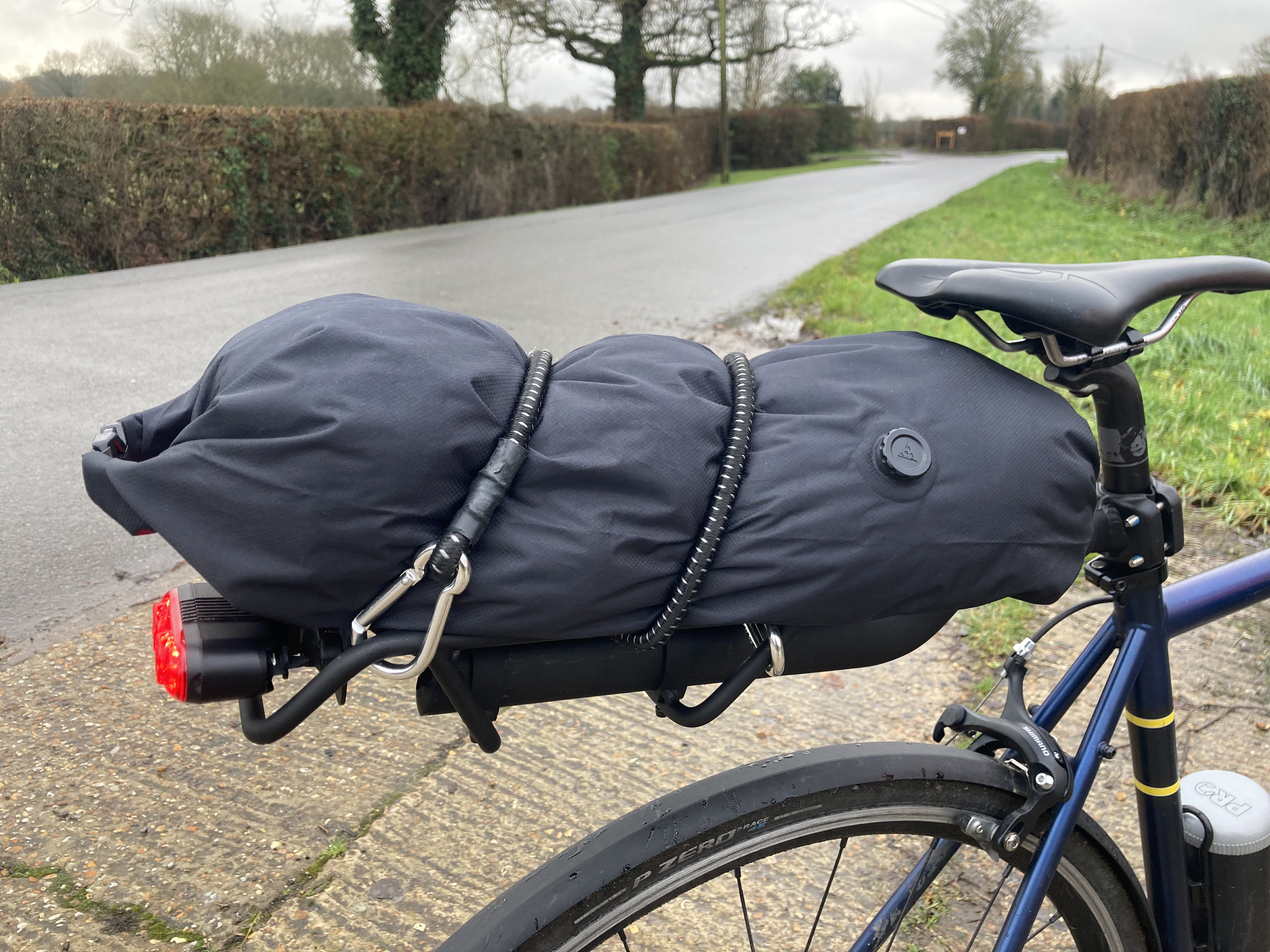
The construction
The rack is sturdily constructed using aircraft grade 6061 aluminum tubing, and it attaches to any seat post diameter from 22mm to 32mm via a four-bolt clamp. The clamp is 50mm tall, so you'll need at least that amount of seatpost available to use the rack. This neat approach does enable frames without conventional braze-on rack attachment points to still carry a load. There is a fixing plate at the rear to which a light can be attached - invaluable if the load will obscure your regular mounting point.
It measures 517mm/20.375" long, 120mm/4.75" wide and 120mm/4.75" deep and is finished in matt black.
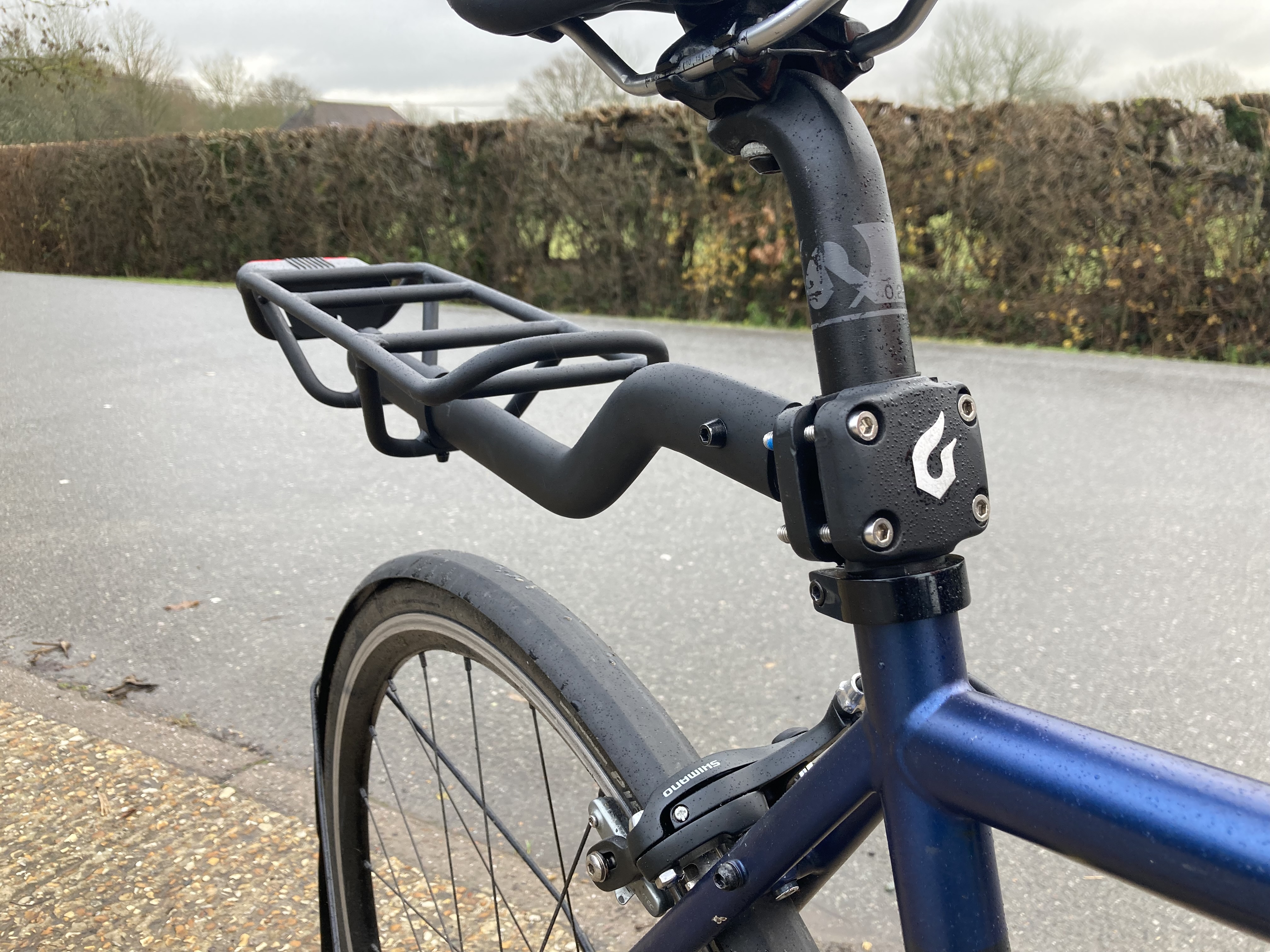
I found fitting the rack to be straightforward, although trying to hold the rack, faceplate and shim in place while bolting the parts together required one hand more than the two I already possess. It wasn't too difficult, it just required some patience. In the end, I loosely bolted the non-shim side, slid the shim in and screwed the other two bolts finger tight. I then made sure that the rack was straight before torquing the bolts up (6.5-9Nm recommended).
To accommodate a dry bag secured with a bungee cord, I fixed the rack in the downward position, with the load section slid back as far as it would go. It needed to be kept well back so that the bag wouldn't catch the back of my legs. I also wanted to keep the load as low as possible so that the center of gravity wasn't too high.
The latest race content, interviews, features, reviews and expert buying guides, direct to your inbox!
Before fitting, I decided to drill a couple of 5mm holes so that I could fit my Cateye rear light rack bracket. Two vertical holes are already pre-drilled, but I needed two horizontal ones for my bracket. Being aluminium it was easy to drill, and I was pleased with the outcome. My light could sit beneath the dry bag load and still remain visible.
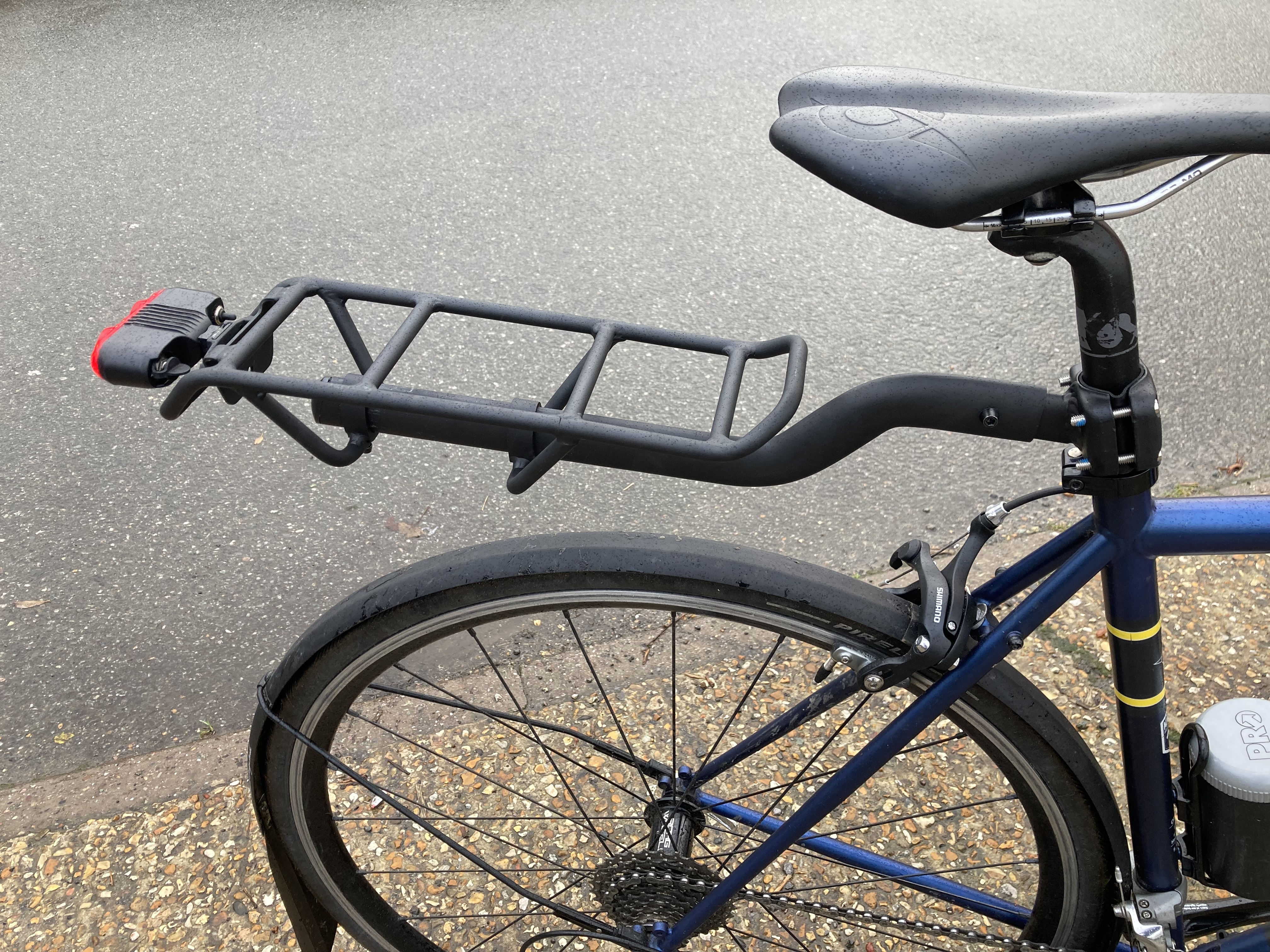
The ride
Once out riding with a load the rack felt stable and secure and my bike remained well balanced. There were no noises, flex or other detectable movements. My inner leg rubbed occasionally on the four-bolt faceplate, but a longer seat post and smaller frame would have enabled the rack to be bolted further down, curing this interference. It was more a quirk of my setup than a design issue.
There was a small amount of vertical movement at the join between the seat post clamp stub and the main beam. Here there is a single bolt that enables you to set the beam in an upward or downward position. It didn't make a noise or rattle, and it was weighted down by my bag, which kept it stable. I tightened the bolt to a reasonable torque of 5Nm but couldn't eliminate the small movement. However, it never became a problem.
In the downward configuration I favoured there was 35mm of fore and aft adjustment. When used the other way up there was circa 45mm of adjustment available.
Blackburn suggests using a rack-top bag, which seems to be a sensible idea. I was unable to test the rack in this configuration as I no longer own a top bag, but my dry bag and bungee cord setup worked well enough and felt totally secure.
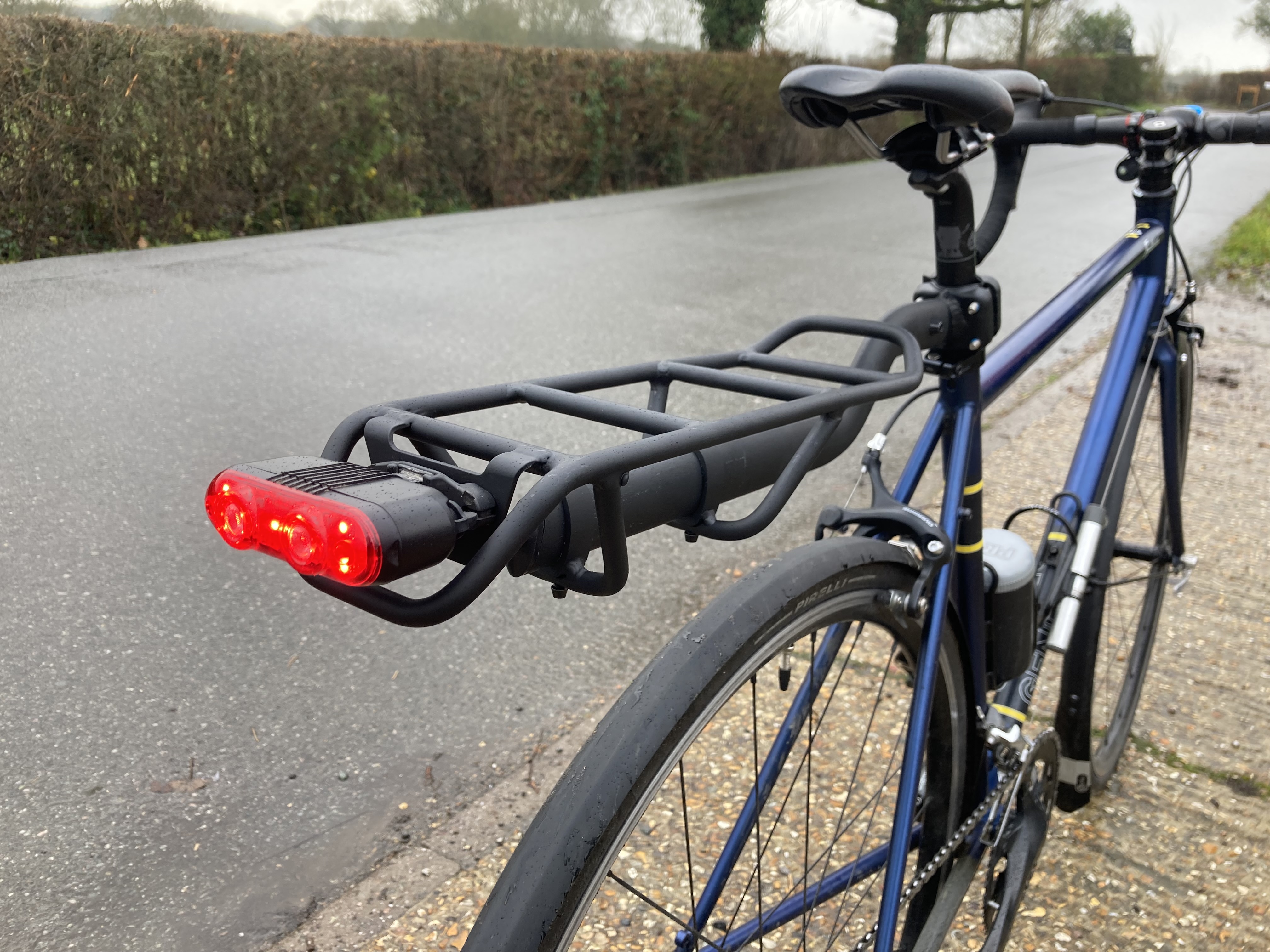
NB authors own light fitted
Verdict
I found the Blackburn Central Seatpost Rack to be well made, versatile in setup and secure in use. I liked that it had a rear light plate, which once modified to suit my Cateye bracket meant that I was more visible. It felt secure on the bike and it carried my load easily. Although it will fit most bikes with ease, it really comes into its own with bikes that don't have frame eyelets for racks/fenders. It's pretty straightforward to fit and remove, but not so easy that I'd want to do it often.
Overall it's a good option if you need to carry a bag but can't fit a conventional rack. It's even worth considering even if you can!
Over 40 years cycling in a variety of disciplines including road riding, commuting, a self-supported Land's End to John o' Groats trip, XC mountain biking and several Polaris Challenge two-day events. Adventure, escape and fun are the motivations for my riding. I also love bike and kit design and have fillet brazed a couple of framesets using Reynolds 853 steel tubing for myself. A very satisfying experience to ride your own bespoke bike!
Height: 180cm
Weight: 66kg